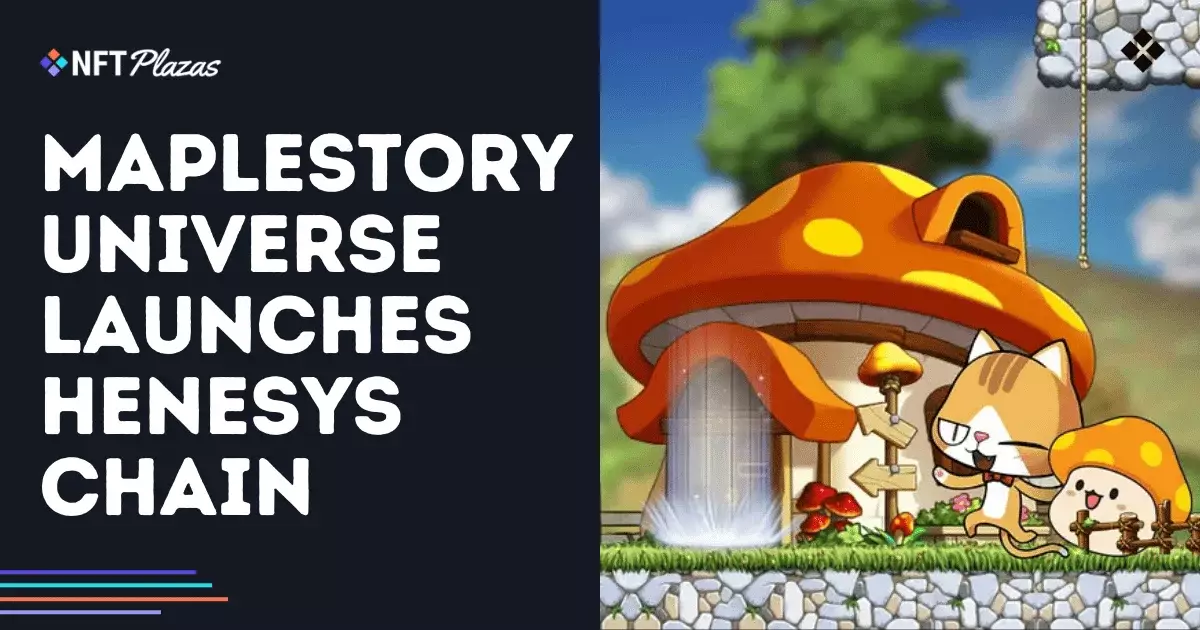The NFT landscape has transformed dramatically over the past few years, and with it, so has the potential for gaming. MapleStory Universe’s introduction of the Henesys Chain, a new Layer 1 blockchain, is a promising development in the quest for more accessible, community-centric gaming experiences. Built on Avalanche and designed through the AvaCloud framework, the Henesys Chain aims to blend the beloved elements of the original MapleStory with cutting-edge blockchain technology. This fusion has the potential to redefine what players can expect from online gaming, but is it enough to place MapleStory back at the forefront of gaming innovation?
One cannot overlook the ambitious spirit behind the creation of a custom blockchain tailored specifically for MapleStory Universe. By naming the chain after Henesys, the game’s iconic starting village, developers not only pay homage to the roots of the game but also signal an intention to cultivate a vibrant community that players can interact with more deeply. However, the real question remains: can a highly specialized blockchain thrive in an ecosystem that is diverse and often dominated by larger platforms?
Breaking Down Barriers: The Promise of Gasless Transactions
One standout feature of the Henesys Chain is its commitment to gasless transactions. The absence of gas fees and complex wallet interactions creates a more inviting environment for players who may find traditional blockchain mechanics intimidating. Utilizing meta-transaction technology, the Henesys Chain aims to lower these barriers to entry, thus democratizing the crypto-gaming space.
While this is indeed an alluring prospect, it raises concerns about sustainability. Gasless transactions could lead to a dilution of network security and resources if not carefully managed. The success of this model hinges on how effectively the developers can balance cost-free interaction with the necessary robustness to withstand larger influxes of players. Should the Henesys Chain falter under the weight of simulated mass user engagement, it would serve as a cautionary tale rather than a success story.
Nurturing Scarcity with Permissioned NFTs
The Henesys Chain also introduces a permissioned NFT system to maintain item scarcity and value, a tactic that could set it apart in the crowded NFT space. By restricting which smart contracts can mint NFTs, developers aim to ensure that the in-game assets hold their worth over time. Employing Chainlink’s Verifiable Random Function adds a layer of transparency to the item enhancement process, making the acquisition of digital assets feel rewarding rather than arbitrary.
Nonetheless, this monopolistic approach to NFT creation could lead to a significant drawback. While preserving scarcity might sound appealing, it could alienate developers and artists who thrive on more open-ended, emergent creation methods often found in decentralized spaces. As the gaming community forges ahead, balancing the need for controlled growth against creative freedom will be pivotal to sustaining long-term player engagement.
Developer Ecosystem: A Double-Edged Sword
The introduction of an SDK for third-party developers to create ‘Synergy Apps’ aligns well with the goal of expanding the MapleStory Universe. Allowing the community to contribute companion games, marketplaces, and social tools can cultivate a rich ecosystem all tied to the Henesys Chain. Such synergy could further solidify the chain’s relevance in the ever-evolving gaming narrative.
However, one must question whether the MapleStory Universe has sufficiently prepared itself to handle the influx of expectations and competition from external developers. A poorly managed developer ecosystem could lead to fragmentation and complicate user experience, undermining the very community-building efforts that the Henesys Chain aspires to promote.
Real Economic Activity vs. Speculative Trends
One of the most significant initiatives within the Henesys Chain’s infrastructure is the $NXPC token, which seeks to underpin the economy tied to item creation and trading. This initiative speaks directly to the demand for real economic activity rather than speculative financial maneuvers often seen in the crypto domain. Players are thereby incentivized to produce, enhance, and trade their in-game items, thus reinforcing a cyclical ecosystem of engagement.
However, there’s a thin line between fostering economic growth and falling into the trap of creating an unsustainable model that prioritizes speculation. Without robust mechanisms to channel these economic activities toward meaningful gameplay, the experience could devolve into mere financial transactions rather than stories worth experiencing.
As the Henesys Chain pivots MapleStory Universe into the web3 realm, it stands at a crucial crossroads between innovation and tradition, opportunity and risk. Whether it can navigate these challenges successfully will determine not just its fate, but potentially the future of gaming itself.


Leave a Reply